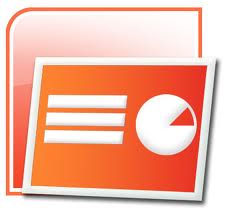Water Resources and Pollution
Next to the discovery of antibiotics, the advent of modern water treatment has had the biggest impact on human life expectancy. Water is an absolute requirement for all known life forms. Although there is a vast amount of water on the Earth, the majority of it is in the ocean. Additionally, the water supply on Earth is finite. All of the water we use is the same water that has been cycled through the Earth for millenia. This makes the problem of water withdrawal, consumption, and degradation a haunting one.
Water Pollution Lecture Powerpoint
 |
Purpose: The first part of this lecture delves into the importance of water, its role in climate, and its distribution around Earth. The accidental creation of the Salton Sea in southern California is used as an example of how water is needed, how it has been manipulated, and some of the unforseen consequences of how we use it. Students will learn about the different reservoirs of water, how they relate to the water cycle, and how we access them. The last section of the lecture focuses on water pollution. Students will distinguish between point and nonpoint sources of all the major types of pollution that will cause impaired waters. Ocean pollution is also covered, with the focus being mainly oil and plastic.
During the second part of the lecture, students are shown examples of different types of pollutants, ranging from inorganic salts and acids to organics such as sewage. Data from fish in Lake Michigan, as well as water testing results from tapwater in Illinois is used as examples of how pollutants find their way back into our diet. Finally, oil pollution in the ocean is highlighted, with the Exxon Valdez and Deepwater Horizon spills serving as examples of what can go wrong. A student notes outline is also available for this lecture.
Essential Concepts: Water pollution, hydrologic cycle, water cycle, evaporation, condensation, water budget, water resources, water supply, groundwater, freshwater, saltwater, icebergs, ice caps, glaciers, infiltration, water table, runoff, aquifer, recharge zone, wetlands, water consumption, water degradation, dams, dam construction, water conservation, point sources, nonpoint sources, pcbs, biomagnification, bioaccumulation, sediment, water quality, impaired waters, tap water, bottled water, spring water, water filtration, ozonation, reverse osmosis, distillation, heap leaching, mining, Pacific trash vortex, oil spills, oil tankers, Exxon Valdez, Deepwater Horizon, Oil Pollution Act, dissolved oxygen, biological oxygen demand, eutrophication, Clean Water Act.
Water Pollution Notes Outline
Purpose: Taking efficient notes can be a big challenge for many students, especially when working from a Powerpoint lecture. This outline gives students a means to take notes that guides them toward important concepts and avoids the pitfalls of writing word-for-word or simply not taking notes at all. The outline is written as a series of questions, fill-in-the-blanks, or diagrams. This outline is based on the Powerpoint lecture written specifically for this unit.
Essential Concepts: Water pollution, hydrologic cycle, water cycle, evaporation, condensation, water budget, water resources, water supply, groundwater, freshwater, saltwater, icebergs, ice caps, glaciers, infiltration, water table, runoff, aquifer, recharge zone, wetlands, water consumption, water degradation, dams, dam construction, water conservation, point sources, nonpoint sources, pcbs, biomagnification, bioaccumulation, sediment, water quality, impaired waters, tap water, bottled water, spring water, water filtration, ozonation, reverse osmosis, distillation, heap leaching, mining, pacific trash vortex, oil spills, oil tankers, Exxon Valdez, Deepwater Horizon, Oil Pollution Act, dissolved oxygen, biological oxygen demand, eutrophication, Clean Water Act.
Tapped Documentary
Purpose: The documentary "Tapped", released in 2009, presents a compelling case against the use of bottled water. Special attention is paid to Nestle, which owns many of the most popular bottled water brands in the United States, including Poland Springs and Ice Mountain. The impacts of the water withdrawal on the individual communities is explained, as well as the relative lack of FDA oversight of the water itself, especially compared to municipal tap water requirements. A second argument against the use of bottled water is the presence of Bisphenol A (BPA) in the plastic itself.
Essential Concepts: Water quality, water consumption, bottled water, water treatment, groundwater, BPA, endocrine hormone disruptors, Pacific trash vortex.
Dead Ahead - The Exxon Valdez Disaster (Movie)
Purpose: Until the Deepwater Horizon oil spill of 2010, the Exxon Valdez was the worst oil spill to occur in the United States. Although a great deal of oil was spilled from the tanker, much of its severity resulted from the disorganized cleanup effort that resulted. Prince William Sound, the area of Alaska affected by this spill, has yet to fully recover over 20 years later. This HBO movie is a re-enactment based on the actual events of the wreck, spillage, and eventual cleanup effort of the Exxon Valdez.
Essential Concepts: Oil pollution, oil tankers, oil spills, Exxon Valdez, oil cleanup
Water Pollution Study Guide
Purpose: Once the instruction for the unit is completed, students can complete this study guide to aid in their preparation for a written test. The study guide is divided into two sections: vocabulary and short answer questions. The vocabulary is taken directly form the lecture, sequentially. The short answer questions are meant to model the type they may see on the exam. This study guide is sequentually based on the Powerpoint lecture from this unit.
Essential Concepts: Water pollution, hydrologic cycle, water cycle, evaporation, condensation, water budget, water resources, water supply, groundwater, freshwater, saltwater, icebergs, ice caps, glaciers, infiltration, water table, runoff, aquifer, recharge zone, wetlands, water consumption, water degradation, dams, dam construction, water conservation, point sources, nonpoint sources, pcbs, biomagnification, bioaccumulation, sediment, water quality, impaired waters, tap water, bottled water, spring water, water filtration, ozonation, reverse osmosis, distillation, heap leaching, mining, pacific trash vortex, oil spills, oil tankers, Exxon Valdez, Deepwater Horizon, Oil Pollution Act, dissolved oxygen, biological oxygen demand, eutrophication, Clean Water Act.
